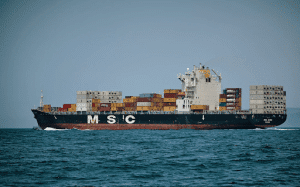Calculating order fulfilment costs is an extremely important part of the process for your ecommerce business. Ultimately, costs will vary depending on your supplier, but a fulfilment centre considers various aspects throughout the fulfilment process in order to calculate an overall cost per order.
Additionally, pricing structure is determined by the amount of orders, the type of product and add-ons that may incur further costs depending on what your requirements are.
Our guide below will take you through the various aspects a fulfilment centre considers when calculating fulfilment costs.
Order fulfilment costs – what are they?
Fulfilment costs are determined by multiple factors, so there are various criteria to consider for orders and for each ecommerce business. Due to the differing nature of merchants’ businesses, there isn’t a set-structured cost that is applicable across the board.
A fulfilment centre with a flexible, tailored approach will consider your business on an individual basis, learning more about what it is a business offers and partnering with the merchant, to take a more holistic approach in determining the best solution for each customer.
Fulfilment cost factors
Initially, the properties of a product are important, considering factors such as weight and the type of product. The number of orders or SKUs per order will then be ascertained.
The shipping method is obviously significant, as express or standard delivery costs will differ greatly from European or global shipping options. Destination, weight, dimensions and the carrier used will also be determining factors.
Comparing fulfilment cost per order
Because of the fluid nature of the business and differences in ecommerce stores, it is very challenging to try and compare the cost per order. Depending on which fulfilment centre you partner with will determine factors such as automation and the level of order management system usage needed.
If you want to try and draw comparisons on data or trends to keep track of your expenditure, deploying an internal method of historical comparisons is the most effective way to assess your fulfilment cost per order.
The breakdown of fulfilment costs
Now you know how order fulfilment costs are considered, it is important to understand each individual component within the full breakdown of overall fulfilment costs. Below are the six most common charges associated with order fulfilment:
- Set Up Fees: Initially, you’ll require a fulfilment centre to set up your ecommerce business, with seamless integration of all marketplaces and shopping channels, setting up warehouse space and EDI set up.
- Costs of goods and services: The cost of goods receipt is determined by the type of delivery a warehouse receives. Again, this will depend on the number of orders and products you are shipping. Goods arriving on pallets can be arranged swiftly, whereas non-palletised goods will require a thorough approach. Also, counting and inspecting goods for any damage and arranging them into the allotted location within the warehouse is contained within this phase of the process. A fulfilment company may pre-determine a set price for this service, rather than hourly charging.
- Cost of storage: Typically, the amount and type of goods dictates the cost of storage. As there are such variations in products, certain lines may require additional storage methods than others.

- Picking and packing: The pick and pack part of the process will be determined by the level of products and SKUs for a store. Depending on how many picks are required will determine the final cost. Some fulfilment centres charge per pick and pack, with discounts afforded for multi-picks. Separate costs are applied for any B2B or FBA orders.
- Shipping costs: The nature of the products you require shipping, as well as the location and the quantity will inform how much your shipping costs are. They are probably the biggest area of focus, particularly for large-scale merchants. If you are looking to ship small items within a certain measurement bracket, there is scope for cheaper shipping. Larger items will obviously require higher shipping fees.
- Returns: Costs related to returns will usually entail the disposing of goods or returning back to existing warehouse stock. Other additional services can be added depending on your fulfilment provider.
Can a fulfilment centre lower operational fulfilment costs?
Your ecommerce business may benefit from partnering with a fulfilment company, as this will enable you to maintain a high level of customer service and economically-beneficial order fulfilment. Ecommerce businesses are benefitting from partnering with a fulfilment company, as the all-encompassing nature of their operations means costs are lowered and inventories are managed through fulfilment software.
Order fulfilment with TSP
Drawing up a comparative analysis to ascertain your order fulfilment costs is difficult, given the agile nature of the industry. Without carrying out your own due diligence on trends and data, which can often be time-consuming, you may never be able to accurately determine your cost per order for fulfilment.
Partnering with a fulfilment centre can give you a greater deal of transparency in your operations, allowing you to track and manage your costs and inventories seamlessly.
At TSP, we offer a tailored, flexible approach to our costs, ensuring we know as much about your business as you do from the outset.
We have an award winning cloud-based management system, which can help you calculate all relevant costs related to order fulfilment. Our process and pricing is simple, and we operate a policy of honesty and integrity with all associated costs.
Contact us today to discuss all the options available to you and receive a fair and competitive quote.

